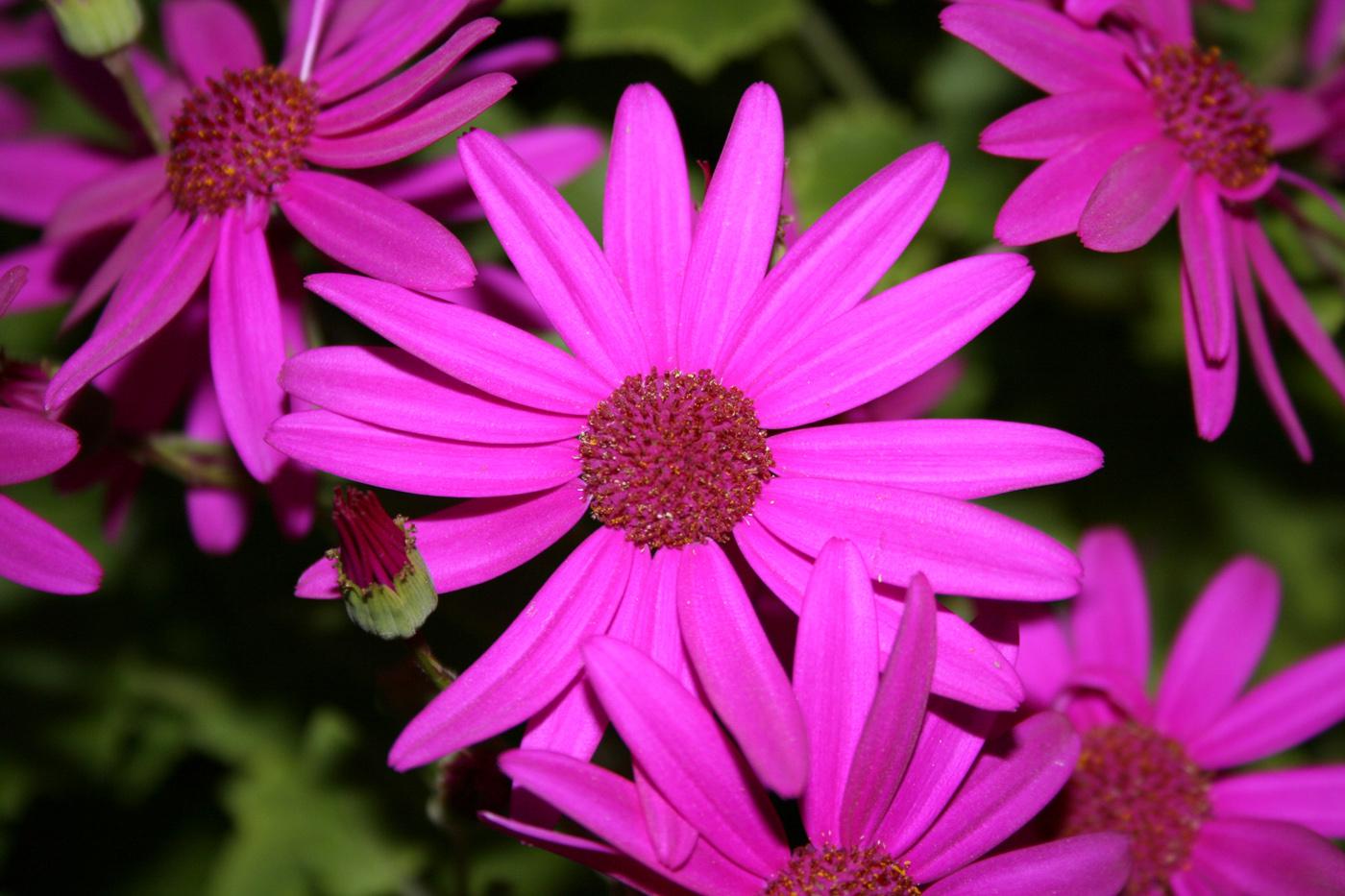Information Possibly Outdated
The information presented on this page was originally released on February 15, 2011. It may not be outdated, but please search our site for more current information. If you plan to quote or reference this information in a publication, please check with the Extension specialist or author before proceeding.
Plant Senetti pericallis for cool-weather blooms
This winter’s irregular temperatures have been tough on landscape plants all across Mississippi and have given even positive gardeners a case of the winter blues. One sure-fire sign that spring is around the corner is the Gulf Coast Garden and Patio Show February 25, 26 and 27 at the Coast Coliseum in Biloxi.
The show gives many gardeners their first glimpse of the newest trees, flowering annuals and perennials, and shrubs for the home garden and landscape. Many local growers and landscapers set up display gardens. This is a great chance to see how these beautiful plants can look in the landscape.
If seeing the gorgeous plants is not enough to get you revved up for the warm months, perhaps a workshop will. Some of the leading garden and landscape professionals in the southeast present free seminars each day of the show.
One gorgeous, flowering plant that has left me in awe the past couple of years is the Senetti pericallis. Its colors are almost iridescent and include deep blue, blue, magenta and lavender. Bicolor selections of blue, magenta and light blue are particularly pretty with their white halos in the center.
One of the best attributes of pericallis is their love of early spring’s cooler temperatures. They grow and flower when the thermometer is consistently in the 35- to 40-degree range. But you will have to protect them or bring them inside if it gets colder, as these plants are not frost tolerant.
Use Senetti pericallis as you use mums in the fall. They look great alone in a container or even better with other plants in a container. Whichever way you display these colorful plants, take advantage of their reblooming capabilities.
When the flowers start to fade, prune the plant back by 50 percent. Replant into a larger container, then water and fertilize with a water-soluble fertilizer. In three to four weeks, new flowers will start to appear for a second show. The flowers will stop once the temperatures are consistently above 85 degrees.
If you maintain the plants through the summer, you will be rewarded with a burst of fall flowering.
Senetti pericallis have relatively few pests. During the warmer days of spring when the humidity is high, powdery mildew can be present. Deadhead the flowers to lower the chances of getting botrytis on the spent blooms.
Watering is important to maintain good health for these plants. When temperatures are cool, wait until the potting media feels dry before watering. As temperatures increase, don’t let the container dry out completely. Always fertilize with water-soluble formulations.
Always plant Senetti pericallis in a good, peat-based potting media with good drainage. A potting media that holds too much water can lead to root problems.









